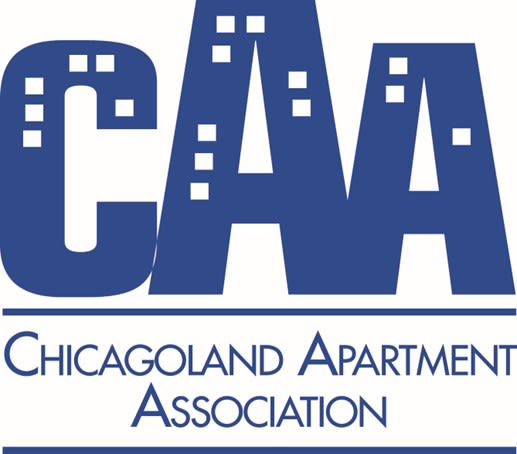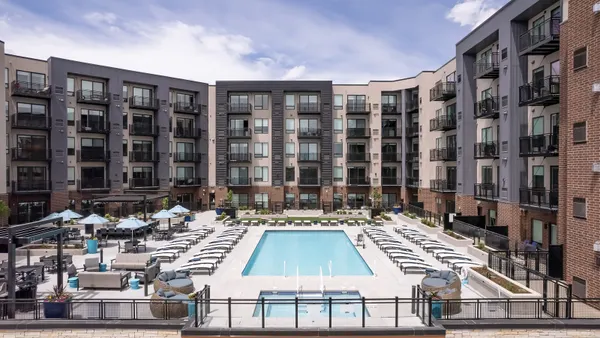Like its REIT peers, MAA beat expectations in the first quarter. However, that overperformance didn’t change its outlook for the rest of 2025.
“Despite the beat, management maintained guidance, following the lead of others given the uncertain macro [environment],” wrote Alexander Goldfarb, managing director and senior research analyst for investment bank and financial services company Piper Sandler, in a report shared with Multifamily Dive.
Still, President and CEO Brad Hill said the Memphis-based REIT is well-positioned to handle market turbulence.
“While macroeconomic uncertainties have increased due to the potential tariffs, our exclusive focus on high-growth markets; lower average price point; broad diversification by market, submarket and price point; our operating efficiencies and scale should position MAA to weather tariff or economic challenges and allow us to take advantage of growth opportunities that may arise,” Hill said.
In Q1, MAA’s markets — many of which have been hit with high levels of apartment supply over the past couple of years — continued to show improvement. Still, those metros probably won’t see a full recovery this year.
New rents continue to struggle
MAA reported improving turnover at 41.5% in Q1. Two years ago, that rate sat at 46%. “That 5% reduction is a long-term trend that I think will stay low, and … there are significant implications for that,” Hill said.
Improved turnover boosted renewal rents, which grew 4.5% on a lease-over-lease basis. MAA expects that trend to continue.
“Encouragingly, on the renewals, May and June look really strong and [we’re] sending out July right now, which we expect to be strong as well,” MAA Chief Strategy and Analysis Officer Tim Argo said on the earnings call. “So we think the renewals will continue to have a bigger part of that mix. We continue to see the renewal acceptance rates be stronger than what they were last year.”
BY THE NUMBERS
| Category | Q1 | YOY Change |
| Property revenues | $518.8 million | 0.1% |
| Net operating income | $332.8 million | -0.6 |
| Operating expenses | $186 million | 1.2% |
| Funds from operations | $2.21 | -8.3% |
| Rent per unit | $1,690 | -0.6 |
| Occupancy rate | 95.6% | 30bps |
SOURCE: MAA
Elevated supply in many of the REIT’s markets continued to pressure new lease rents, which fell 6.3% on a lease-over-lease basis in Q1. Blended leases fell 0.5% YOY.
“Broadly, the supply picture looks pretty much like it has or like we've thought for the last few quarters, where we're continuing to see it slowly moderate,” Argo said. “I mean, we're still obviously at a higher-than-normal delivery cadence. So even though 2025 is lower than 2024, it's still what I would call above normal.”
Argo does see the situation improving next year to where new supply is below the long-term average. “As we've said all along, I think where you really start to see that strength is late 2025, which will be offset by some normal seasonality that tends to wane,” he said. “But 2026 is when we really expect to see that acceleration,” he said.
Trade policy could impact demand. However, MAA’s current metrics aren’t indicating a change in consumer behavior, according to Hill. “Collections are solid, migration trends are positive and the challenges of single-family home availability and affordability continue to support our strong renewal performance,” he said.
Strength in the Old Dominion
In Q1, Virginia provided the top performers for MAA. Richmond, Norfolk, Fredericksburg and the REIT’s four Northern Virginia properties all exceeded the portfolio average from a blended lease-over-lease pricing standpoint.
MAA’s other mid-tier markets, including Charleston and Greenville in South Carolina and Savannah, Georgia, also showed strong pricing power in Q1, according to Argo.
“Of our larger markets, Tampa continued to show pricing recovery,” Argo said. “Houston held steady.”
MAA’s largest market, Atlanta, is starting to show some improvement, with new lease pricing performing better than it has in two years and occupancy recovering.
“We're about 120 basis points or so better in terms of occupancy than we were this time last year,” Argo said. “If you look at it compared to the broader portfolio, it still lags our portfolio a little bit, but it's much improved from where it was this time last year.”
Dallas, the firm’s second-largest market, posted a same-store revenue decrease of 0.4% YOY — the same decrease it posted in the previous two quarters. Jacksonville, Florida, is starting to accelerate despite heavy supply, according to Argo.
The markets seeing the highest deliveries were MAA’s worst performers yet again. “Austin, Phoenix and Nashville are the three that I would point out that just continue to work through the supply,” Argo said.
Click here to sign up to receive multifamily and apartment news like this article in your inbox every weekday.









































